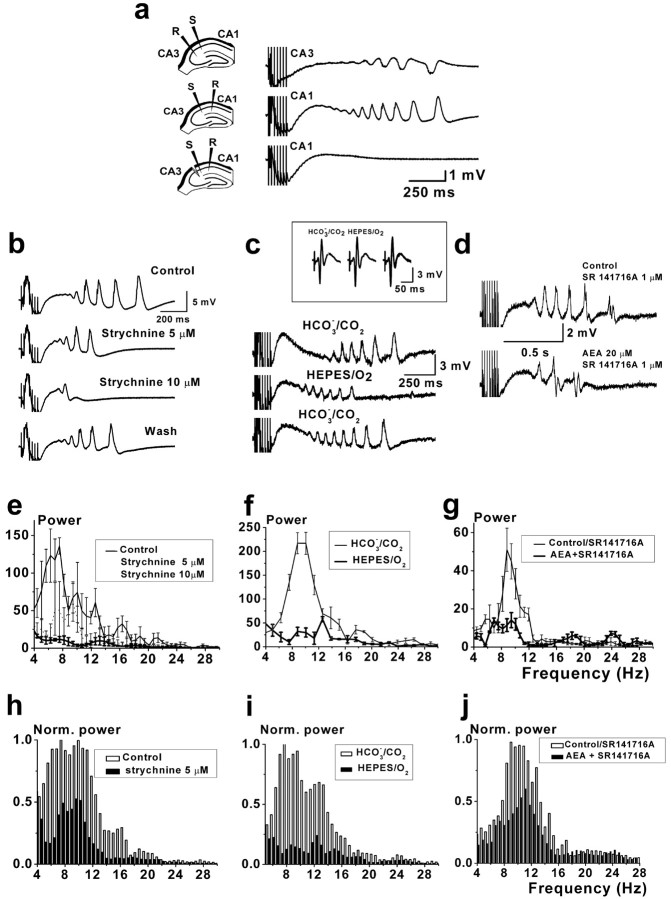Figure 6.
GlyR-driven seizure-like rhythmic activities in hippocampal slices attenuated by AEA. a, Seizure-like activity recorded from CA1 and CA3 stratum radiatum in response to stimulation (S) of Schaffer collateral-commissural pathway with high-frequency short trains of stimuli (7 stimuli; 50 Hz) applied every 4 min in the presence of 30 μm bicuculline. Slice events were detected by using extracellular field potential recordings (R). Cutting the Schaffer collaterals abolishes discharges in the CA1 area, indicating that excitatory inputs from the CA3 area are necessary for entraining CA1 to generate the epileptiform discharges. Traces of epileptiform discharges in control and in the presence of strychnine (b) and AEA (20 μm) against the background of SR141716A (1 μm) (d) are shown. c, Experiment demonstrating attenuation of epileptiform activity after 30 min of perfusion in nominally CO2-free superfusion medium. Note that control field potentials, evoked by single stimuli stimulation of Shaffer collateral-commissural pathway (no bicuculline), did not change after changing of superfusion medium (inset). e-g, Corresponding averaged Fourier transformations (4 epochs of 2 s recordings) of epileptiform activity. h-j, The normalized summarized Fourier transformations of 2-s-long epochs of epileptiform discharges at β-frequency bands in control and in the presence of strychnine (5 μm; n = 5) (h), in CO2-free medium (n = 3) (i), and in the presence of AEA and SR141716A (n = 4) (j).

